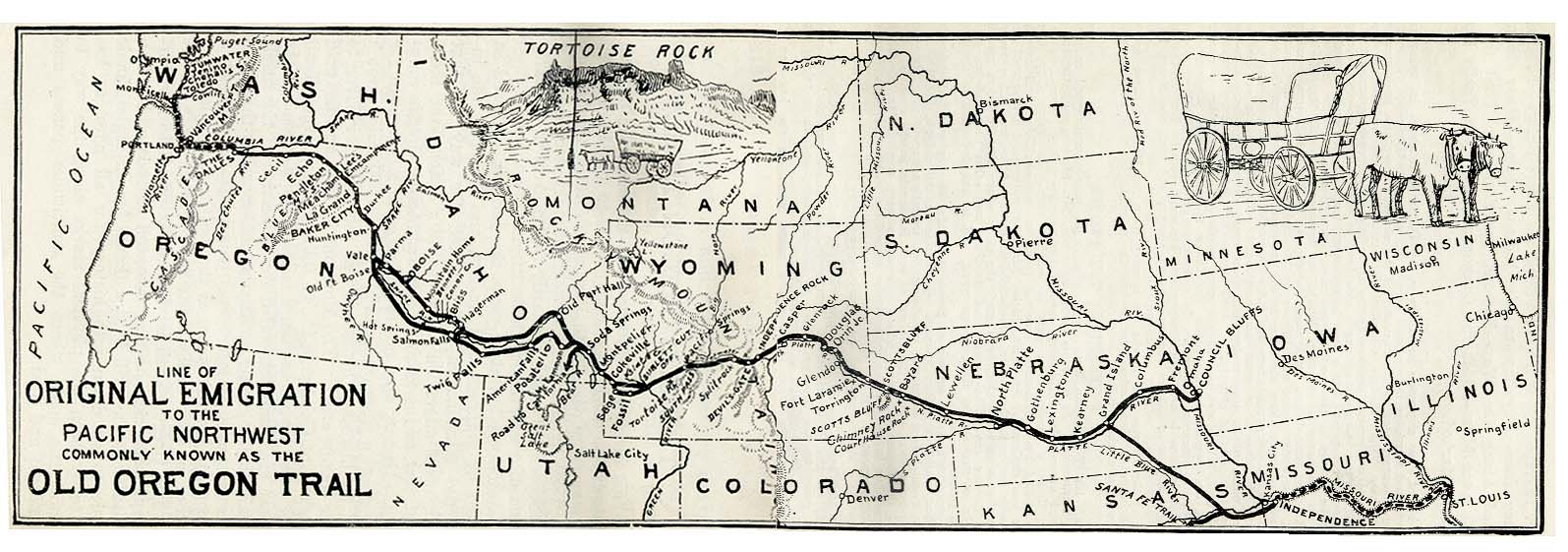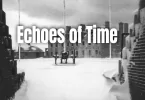The Oregon trail is popular in the historical lore of the United States. It is a 2,200-mile trail that led pioneers across the North American continent to the West Coast. Fur traders, explorers, gold miners, and pioneer families all used and helped develop the trail over a period of several decades in the mid 19th-century. The “jumping off point” of the trail, which was considered its beginning, was just outside of St Louis, Missouri, on the other side of the Mississippi River, through the trail didn't start to become an obvious well-traveled road until Kansas. The Oregon Trail led travelers through what are now Kansas, Nebraska, Wyoming, and Idaho, and into Oregon.
The beginnings of the trail were laid by fur traders and trappers beginning in about 1811, though it was a primitive trail then, and only able to be traveled on foot or horseback. When the first organized wagon train of pioneers migrating out west used the trail in 1836, a wagon trail had been cleared by those early fur traders and explorers all the way to Idaho. As the trail became used more and more by wagons and migrating families, rather than just small groups of single men, the trail was expanded to make it wagon-friendly all the way into Oregon. It eventually reached Willamette Valley in Oregon, where the trail ended.

Not every traveler going out west was looking at Oregon as a destination. Some wanted to settle in Wyoming, Colorado, Idaho, Montana, and other western territories. To accommodate them, offshoots to the trail were made. During the years where the trail reached its peak use, approximately 400,000 people of all kinds traveled the trail. These people were families, businessmen, farmers, ranchers, and miners. Some people even traveled the trail to set up businesses to sell provisions to others who were traveling the trail.
The use of the Oregon Trail began to decline after the Civil War when the first transcontinental railroad was established in 1869. This railroad made travel to the west safer and easier. Modern highways that travel to the west today follow parts of the original trail. However, most of the original trail is still visible as a heritage site, and there have been numerous re-enactments of traveling the trail over the past 100 years. The U.S. federal government has preserved many landmarks along the trail, such as buildings that were erected to serve travelers on the trail, wagon ruts, registers where travelers carved their names on natural aspects of the landscape, and bridges.
So many people traveled the Oregon Trail, it is highly likely you have one or more ancestors who traveled it if you have any ancestry that originates in the western states in the 19th century. How do you discover if your ancestors traveled the Oregon Trail? First, take a look at what relatives you have who live out west, then trace them back to their origins in the west. Remember, the American west was not fully settled by Americans until the end of the 19th century and didn't really begin in earnest until the early 19th century. Any ancestors you have in America who originated in this country earlier than this time almost certainly spent time living in the east before migrating to the west.
Trace your western relatives upward through time to discover when that branch of the family migrated out west. If they went there anytime from the 1830's to the 1860's, they almost surely used the Oregon Trail. If they went there from the 1860's through the 1890's, they might have used the trail, but they also may have used a train. You might be able to find out which way they went by looking at old family letters, journals, and Bibles. You can also check census records for the first censuses for the western territories and see where they say your ancestors originated. You may be able to find records back in their state of origination that talks about their migration to the west. If you do discover you have ancestors who likely traveled the Oregon Trail, be proud, as they are a part of American History that is iconic and important to the creation of the country we enjoy today.
Learn More:
-
- The Oregon Trail: A New American Journey by Rinker Buck
- Surviving the Oregon Trail, 1852 by Weldon Willis Rau
- Daily Life in a Covered Wagon by Paul Erickson




